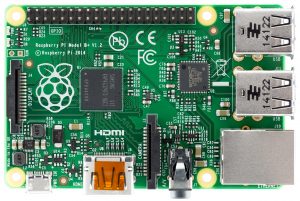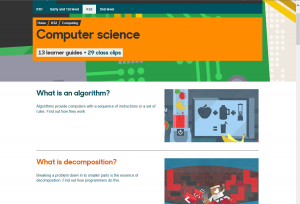Lecture 4 was all about creating an effective website design. It is essential to have a good and inviting website design to ensure the usability and accessibility is at the highest it can be. This means that people of all ages and abilities are able to understand the navigation and how to reach the things that they need or want.
The lecture started off with experimenting with ‘X-Ray Goggles’. This is a site that can be used on Firefox or Chrome to view and edit the HTML coding of a webpage. It is a brilliant tool, which I will defiantly use within the classroom, since it shows children how the page is made up and that there is more beneath the pictures and the colours that they see. This can be used to both encourage them to change the details of a webpage, for example using a BBC article and adding in their own story, or it can be used for introducing the children to HTML coding in a fun and interesting way. But this can also be an effective way to transition into something more complex in regards to coding, for example Raspberry Pi. 
Back to the websites; we were introduced to some basic design principles of a website. The main and most important part of the website is the content, because this tells the audience what the website is and what they can do there. Consider going onto a clothing site, but there was no clothes for sale, the website would be completely pointless and therefore would not be effective. Another important part of the website is navigation, since the audience need to know how to get from one section to the other and back again to the home screen. As Krug’s law of usability states the audience don’t want to be confused or have to think about where they are going on the site, it should be obvious where everything is. But also, the layout of the website. Websites tend to follow the rule of thirds, symmetry and balance to make sure that it is as attractive and welcoming as it can be. This helps to keep the audience interested and allows them to skim and scan across the page to find the information they want quickly.
We looked at some websites in pairs to see which were the most effective, we decided that both YouTube and Wikipedia followed a very basic rule of 3 and also ensured that the user knew where to find the new information. Youtube suggests things that the user might also want to watch, based on what they have searched for- making it almost effortless to find something new. Wikipedia follows a similar principle, however this has a variety of hyperlinks within the article so that the user can click on something to find out more information. They also use simple but basic colour, designs and logos, so that the users are aware of which site they are on, but are not distracted from the content they want to view.
However, when this was taken into a more educational view point, most of the design requirements are the same. Although the website needs to be tailored and targeted at a younger audience, for example if the site is aimed at KS1 it needs to contain words that they will be able to read, or have the option for a verbal explanation through simple interactive options. Although there is also a layer of pedagogy which needs to be considered to claim that the website is effective in this context, this means that the children will actually be able to benefit from the site through being able to investigate and play with the site in a social constructivist or behaviourist way. The children need to be able to learn something from the site, whether that might be through playing a game about languages or maths. Another also incredibly important point when considering children’s websites is the safety of them. E-safety is now part of the National Curriculum and children need to be aware of the dangers that are out on the internet, both from sites like the BBC to social media and emails.
When looking at these sites, BBC Bitesize and Mathletics, we noticed that both of the sites were incredibly colourful and had a lot of options on their home pages. This is because this keeps the children’s attention and gives them a lot of different options when they first see the site. Particularly on BBC Bitesize the colours correspond to the age range of the children, which makes it easier when younger children come to use this in lessons. It was also very simple for the children to see the difference in the subjects, therefore the teachers are able to give basic instructions and allow the children to navigate the site themselves. Mathletics had a leaderboard of the highest scoring children across the world, and this promotes the children’s motivation to have their name and school on the front of the site, however there is also an option to have just a single school and class, so that the teachers are able to have their own competitions within the school. Although there is a danger with these sites that the children will become distracted by another game or subject that they are not focusing on during that lesson, because of the range of colours and accessibility to them from the current page.
Overall taking these into consideration for my own VLE, I will ensure that there are simple instructions and it is obvious where the children need to be that week by breaking down their tasks. I also want to include a wide range of colours and different games so that the children will want to use the site, and not feel like they have to. I also want to make the site accessible to the parents, and therefore needs to be targeted at both. Therefore there could be an option to have the task read or a video by myself explaining what the children need to do with an example, rather than just the text. The tasks will need to include investigations and games as individual tasks, which they can then upload and comment on each others to enhance and promote the social constructivist principle. The children will then be able to explore and share ideas and learn from each other. These tasks could be anything from going outside to find something, or drawing a picture or writing something. The children should be given the choice of what they want to do, which can be what they feel would benefit them the most.
